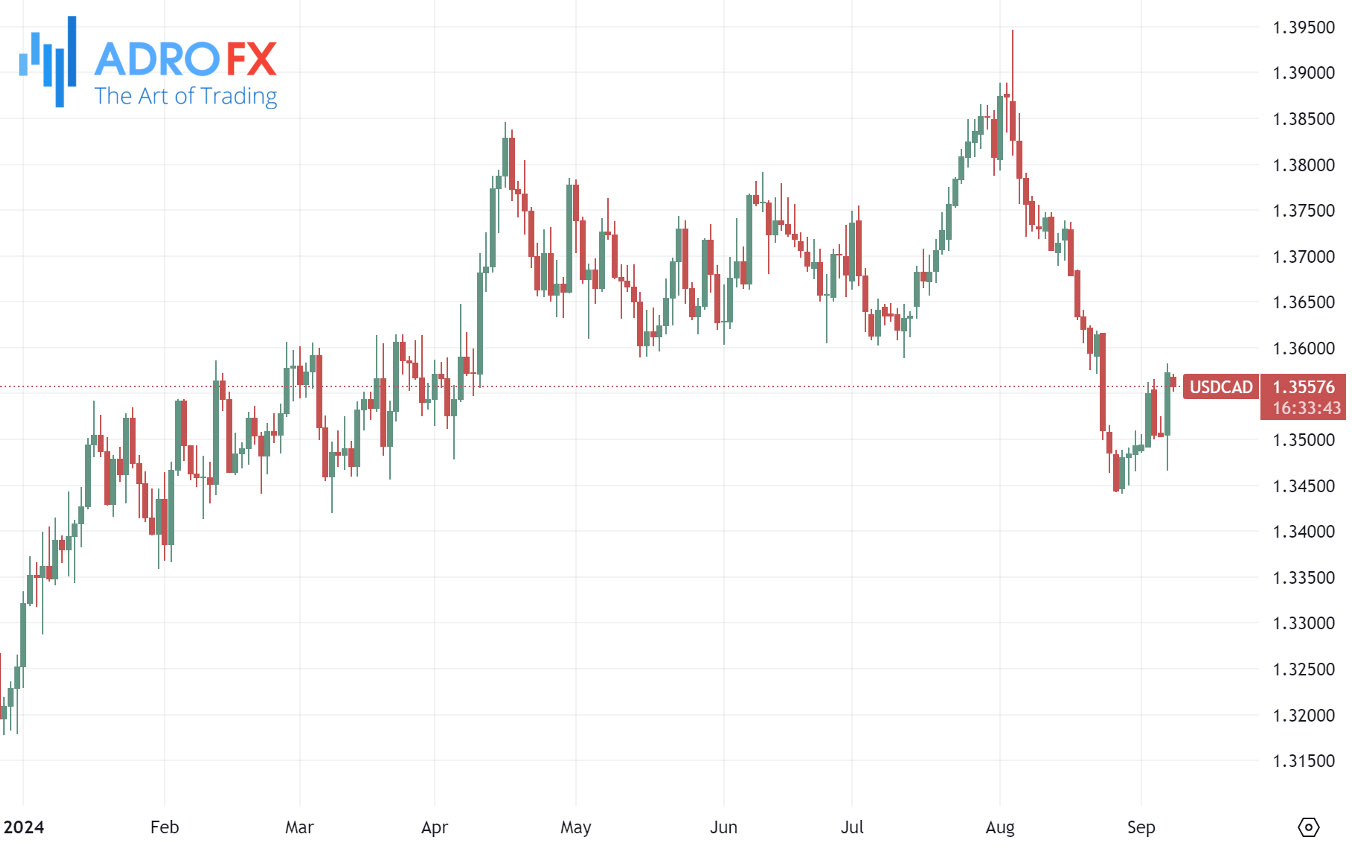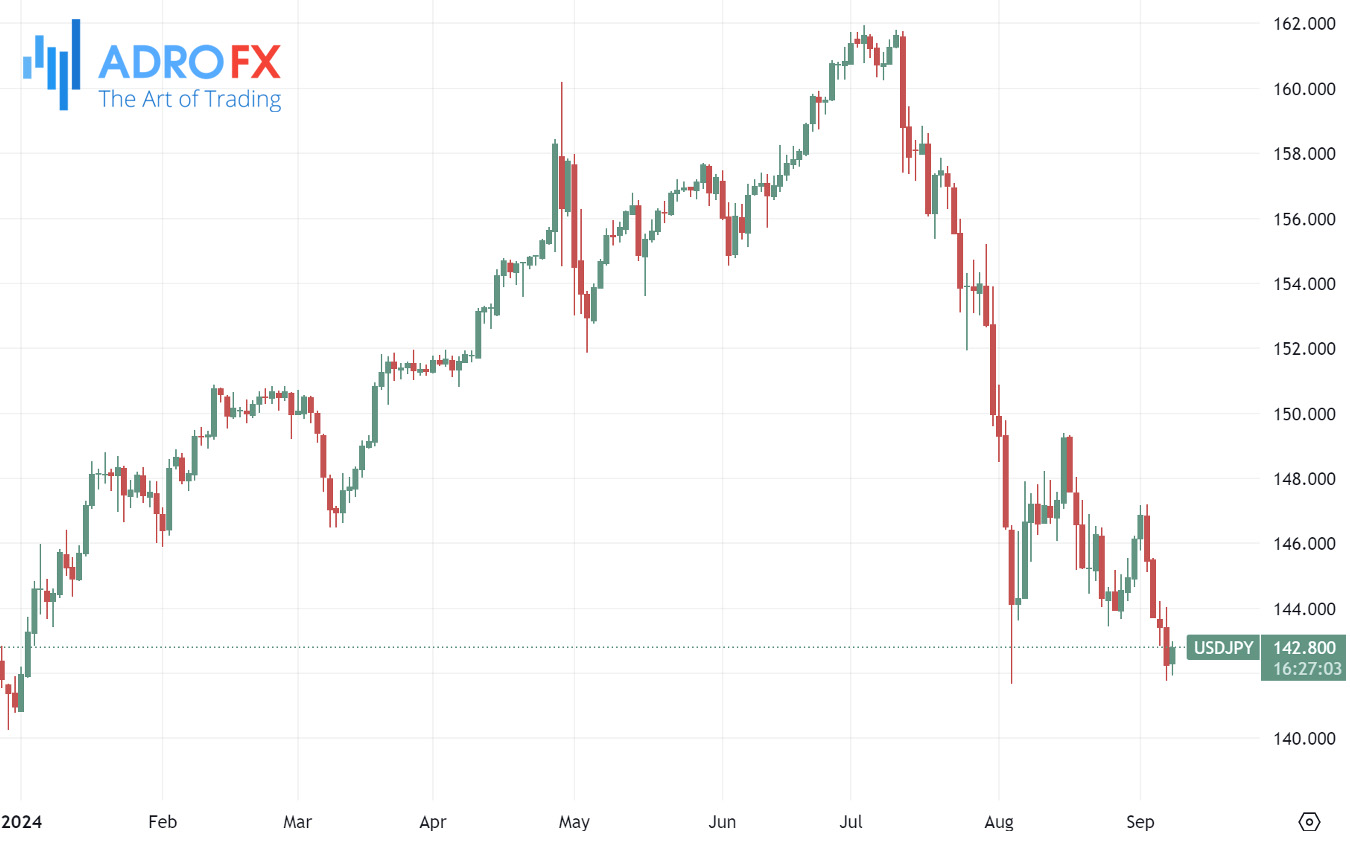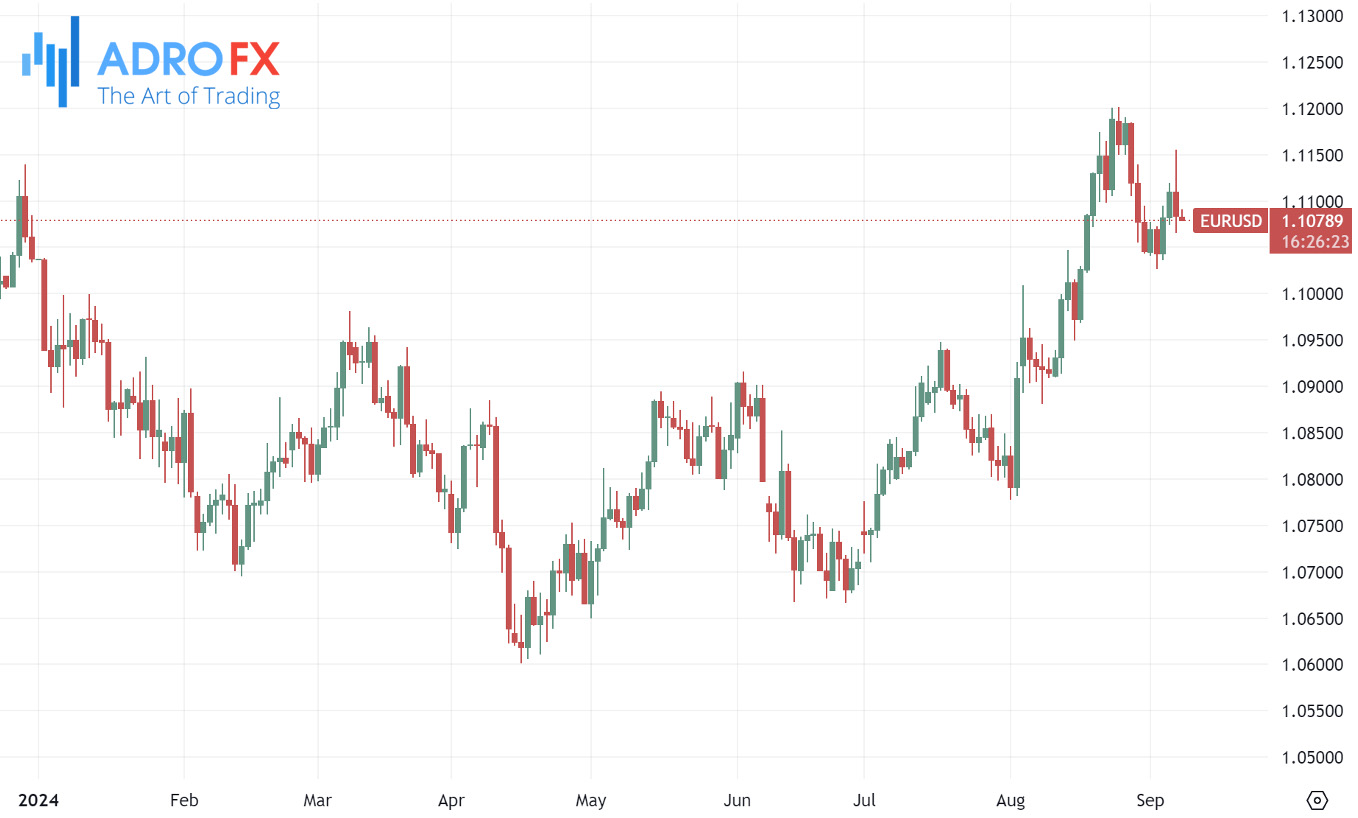Dow Drops 400 Points as US Jobs Report Misses Expectations, Rate Cut Bets Waver | Daily Market Analysis

Key events:
- Japan - GDP (QoQ) (Q2)
The Dow Jones Industrial Average dropped 400 points on Friday after the US nonfarm payrolls (NFP) report fell short of expectations, along with a downward revision to previous data. The uneven job growth added to the signals of a slowing US economy, but not to the extent that would strengthen expectations for a double rate cut from the Federal Reserve later this month.
By the close of trading on the NYSE, the Dow Jones Industrial Average was down 1.01%, the S&P 500 index declined by 1.73%, and the NASDAQ Composite index fell 2.53%.

According to the Bureau of Labor Statistics (BLS), US NFP employment increased by 142,000 in August, missing the forecast of 160,000. However, this figure was an improvement from the previous month, which was revised down to 89,000 from the initially reported 114,000. Despite the disappointing jobs data, US Average Hourly Earnings grew faster than anticipated, rising 3.8% year-over-year in August, surpassing the expected 3.7% and up from the previous period's 3.6%.
The August NFP report highlighted a weaker-than-expected increase in hiring, which kept the possibility of rate cuts alive. However, the overall interpretation of the jobs report remained unclear. While the headline figure showed a slight improvement from the prior month, most of the job gains were concentrated in the leisure and hospitality sectors, as well as health care and social assistance.
Despite the miss in employment numbers and the growing concerns about a potential recession in the coming quarters, market participants dialed back their expectations for a double rate cut on September 18. According to the CME’s FedWatch Tool, the probability of a 25 basis point rate cut by the Fed this month stands at 75%, with only 25% of traders anticipating a 50 basis point reduction.
The USD/CAD pair struggles to maintain the momentum from Friday's strong intraday rally of over 100 pips, trading with a slight negative bias around the mid-1.3500s during the Asian session on Monday. This downward movement is partly driven by a modest increase in Crude Oil prices, though several factors are expected to limit further losses.

Crude oil prices are bouncing back from their lowest levels since June 2023, which were hit last Friday, driven by projections of a potential hurricane heading towards the northwestern US Gulf Coast, an area that accounts for 60% of the nation's refining capacity. This recovery has supported the Canadian Dollar, a currency closely tied to commodities, while exerting some downward pressure on the USD/CAD pair. However, gains for the Loonie may be capped by a weaker-than-expected Canadian jobs report released last Friday, which has increased the likelihood of further interest rate cuts by the Bank of Canada.
Simultaneously, the Australian Dollar is regaining ground against the US Dollar, bolstered by hawkish signals from the Reserve Bank of Australia. Last week, RBA Governor Michele Bullock indicated that it is premature to consider cutting rates, with the board not expecting any rate reductions in the near future.

Despite softer inflation data from China released on Monday, the Australian Dollar remains robust. China's Consumer Price Index (CPI) rose 0.6% year-over-year in August, slightly up from July’s 0.5% but below the market expectation of 0.7%. On a monthly basis, CPI inflation increased by 0.4% in August, down from July’s 0.5% and missing the 0.5% forecast. Given Australia's close trade ties with China, economic shifts in China can significantly influence Australian markets.
Elsewhere, the USD/JPY pair has ended its four-day losing streak, trading around 142.90 during Monday's Asian session. The pair's recovery is partly due to Japan's lower-than-expected GDP data. However, with strong economic growth, rising wages, and ongoing inflationary pressures, expectations that the Bank of Japan may further raise interest rates remain intact, which could limit the downside for the Japanese Yen.

Japan's annualized GDP grew by 2.9% in the second quarter, slightly below the preliminary estimate of 3.1% and the market forecast of 3.2%. Nevertheless, this marks the strongest year-on-year growth since Q1 2023. On a quarterly basis, GDP expanded by 0.7% in Q2, just shy of the 0.8% market forecast, but still representing the strongest quarterly growth since Q2 2023.
Meanwhile, EUR/USD is attempting to recover from the previous session's losses, trading around 1.1090 during Monday's Asian session. However, the pair's upside potential may be limited, as recent eurozone inflation data has solidified expectations of a rate cut by the European Central Bank at its upcoming policy meeting on Thursday.

With headline inflation nearing 2% and long-term inflation forecasts remaining stable at similar levels, the ECB has a strong case for further easing of its monetary policy. Additionally, last week's mixed GDP data from the Eurozone has reinforced the possibility of a rate cut by the ECB.









